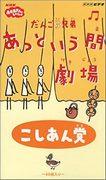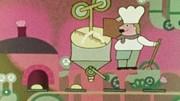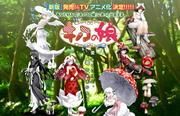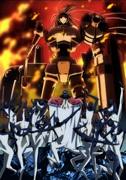The appeal and reviews of "Maboroshi Mabo-chan": An anime experience not to be missed

"Maboroshi Mabo-chan": Welcome to a world of fantasy and adventureThe 1992 anime television series Maboroshi Mabo-chan was based on the manga by Katsushi Katsukawa. The anime aired on Fuji TV every Friday from 4:00 to 4:30 PM. The 24-episode series entertained audiences in its 30-minute slot. It was directed by Hiroshi Ishiodori and produced by Studio Comet, with character design and animation direction by Hiroji Kanazawa and art direction by Manami Matsumoto. Story and worldviewThe setting of "Maboroshi Mabo-chan" is a fantasy country called Jitanfa. In this country, the main character Mabo-chan and her friends go on various adventures. Although each episode has its own independent story, there is a consistent theme and character growth throughout the series. The world of Jitanfa is a place where laws different from reality govern, and where magic and mysterious creatures appear. These elements provide viewers with fresh surprises and excitement. Character IntroductionMabo-chan: The main character is a girl with a curious and courageous personality. She solves various problems while adventuring in the world of Jitanfa. Her drive and kindness are at the heart of the story. Mimi-chan: Mabo-chan's best friend, she always accompanies her on her adventures. She has a bright and cheerful personality and supports Mabo-chan. Grandpa: Mabo-chan's grandfather, he supports her on her adventures. He has a wealth of knowledge and experience, and gives Mabo-chan advice. Other characters that the story revolves around include the residents of Jitanfa and the characters that the viewer meets during the adventure. Each of them has their own unique personality and leaves a deep impression on the viewer. The appeal of the episodeThe episodes of "Maboroshi Mabo-chan" feature a variety of themes and story developments. Below are some of the episodes. Episode 1 "Journey to Jitanfa" (aired April 17, 1992): This is the episode where Mabo-chan steps into the world of Jitanfa for the first time. The story depicts the hopes and anxieties of the new world, drawing the viewer into the world of the story. Episode 2 "Moonlight and Violin" (broadcast on April 24, 1992): In this episode, Mabo-chan is led by the beautiful sound of a violin and has a mysterious experience under the moonlight. The theme is the beauty of music and nature. Episode 3 "Light in the Dark" (aired May 1, 1992): This episode depicts an adventure to find light in the darkness. It emphasizes the courage and friendship that face difficulties. Episode 4 "It's a Car Race Festival" (broadcast on May 8, 1992): This episode is about participating in a car race held in the village of Jitanfa. It depicts the balance between competition and cooperation. Episode 5 "The Face Thief of Pencil Village" (broadcast on May 15, 1992): This episode solves the mysterious case of face-stealing that occurs in Pencil Village. Enjoy the humor and mystery solving. Episode 6 "Two Mimi-chans!?" (Aired May 22, 1992): In this episode, a phenomenon occurs in which Mimi-chan appears to be two people, and the mystery is solved. The themes are friendship and self-identity. Episode 7 "The Little Sheriffs of the Wilderness" (aired May 29, 1992): A story about little boys who work as sheriffs in the wilderness. It depicts courage and a sense of justice. Episode 8 "The Mermaid Princess Goes Extinct" (broadcast June 5, 1992): This episode is about saving the mermaid princess from the brink of extinction. The themes are environmental issues and the preciousness of life. Episode 9 "The Ice Demon Loves Gals!?" (Aired June 12, 1992): In this episode, the ice demon is attracted to a gal. It is filled with humor and romance. Episode 10 "The Big Gamble in Gambling Village" (broadcast June 19, 1992): This episode is about a big gamble that takes place in a gambling village. The themes are luck and strategy. Episode 11 "Circles, Squares, Triangles" (aired June 26, 1992): A story about characters with geometric shapes. It depicts individuality and cooperation. Episode 12 "A Wish Upon a Time Machine" (aired July 3, 1992): In this episode, the characters use a time machine to visit the past and future. The theme is time travel and its effects. Episode 13 "Avec's Journey to the Underworld" (aired July 10, 1992): This episode depicts a journey to the underworld. The theme of death and rebirth is explored. Episode 14 "Grandpa's First Love Story" (aired on July 17, 1992): This episode depicts Grandpa's first love when he was young. The themes are love and youth. Episode 15 "Moko-chan's Lullaby" (aired on July 24, 1992): This episode centers around the lullaby sung by Moko-chan. Music and healing are depicted. Episode 16 "The Lost Village of Color" (aired July 31, 1992): This episode is about saving a village that has lost its colors. The theme is beauty and values. Episode 17 "Fly!! Torimaru the Birdman" (broadcast on August 7, 1992): This is the episode where Torimaru the Birdman achieves his dream of flying in the sky. Dreams and challenges are depicted. Episode 18, "Francine's Eyes" (aired August 14, 1992): The world is seen through the eyes of a character named Francine. Perspective and understanding are themes. Episode 19 "The Legendary Earthfish" (broadcast on August 21, 1992): This episode depicts the adventure of searching for the legendary earthfish. The themes are legend and exploration. Episode 20 "Lullaby of Encounter" (broadcast on August 28, 1992): This episode depicts reunions and partings. The themes are human relationships and the passage of time. Episode 21 "Magic vs. Ninjutsu Great Battle!!" (aired on September 4, 1992): This episode features a showdown between magic and ninjutsu. It depicts the contrast between strength and wisdom. Episode 22 "The Great Dragon King Awakens!!" (Aired on September 11, 1992): This is the episode where the Great Dragon King awakens. The theme is power and responsibility. Episode 23 "The Miracle of the 12 Animal Dolls" (aired on September 18, 1992): This is an episode in which 12 animal dolls perform a miracle. Faith and miracles are depicted. Episode 24 "Goodbye Jitanfa Country" (aired on September 25, 1992): The final episode depicts the farewell to Jitanfa. The themes are departure and growth. Achievements of the production staffEach member of the production staff for "Maboroshi Mabo-chan" played their part to bring this work to completion. Original author Katsukawa Katsushi created a unique world view and characters, laying the foundation for the anime adaptation. Director Ishiodori Hiroshi enriched the story through visual expression while drawing out the best in the original work. The production team at Studio Comet maintained high quality in technical terms, providing viewers with satisfying visuals. Kanazawa Hiroshi, who was in charge of character design and animation direction, created designs that highlighted the individuality of the characters, and Matsumoto Manami, the art director, beautifully depicted the world of Jitanhua. It can be said that the efforts and talents of these staff members led to the success of "Maboroshi Mabo-chan." Viewer reactions and ratings"Maboroshi Mabo-chan" was loved by many viewers when it was first broadcast. Children in particular empathized with Mabo-chan's adventures and were moved by her courage and friendship. Adults also empathized with the theme and message of the show, making it enjoyable for the whole family. The story of each episode and the growth of the characters became a hot topic among viewers, and many fans were born. Even today, the show is highly regarded among anime fans, and there is a constant demand for it to be rebroadcast and released on DVD. Related products and media developmentEven after the anime ended, Maboroshi Mabo-chan was adapted into various media. The original manga continued to be published and loved by fans. Additionally, DVDs and Blu-rays of the anime were released, allowing viewers to enjoy it whenever they want. Furthermore, character goods and games were also released, becoming popular among fans. These related products further expanded the worldview of the work and deepened the bond with viewers. Summary and Recommendation"Maboroshi Mabo-chan" conveys to viewers the importance of courage and friendship through a fantastical world and tale of adventure. The diverse themes and story developments in each episode will be enjoyed by a wide range of people, from children to adults. In addition, this work, which brings together the talent and efforts of the production staff, is a must-see for anime fans. Step into the world of Jitanhwa and enjoy the adventure with Mabo-chan. I'm sure you will be captivated by the charm of this work. |
<<: JOKER Marginal City: A thorough analysis of the fascinating dark hero and his worldview
>>: The appeal and reviews of "Free Kick to Tomorrow": A moving story and deep characters
Recommend
The Addams Family spin-off live-action series Wednesday Chinese trailer
Netflix has released a teaser trailer for Wednesd...
The appeal and reviews of "Flowers and Butterflies": Beautiful visuals and a moving story
Flowers and Butterflies - Flower Butterfly - Appe...
The Last of Us 2's deleted levels will be integrated into the second season of the live-action series
The second season of HBO's live-action series...
The Seventh Man from The Fall of the Galactic Empire: Legend of the Blue Wolves X - Detailed Review and Impressions
"The Fall of the Galactic Empire: The Legend...
New posters and stills of "1921" released: Wang Renjun plays the young Mao Zedong
Today (April 19), the tribute film "1921&quo...
The domestic animation "Star Change" was launched today and the number of views has exceeded 100 million
The Chinese animation "Star Change", ad...
"My Diary" Review: Reassessing the moving songs of the people
"My Diary" - Looking back on the master...
Yowamushi Pedal -LIMIT BREAK- Season 5: A thorough look at the drama of new challenges and breaking through limits
Yowamushi Pedal -LIMIT BREAK- Season 5 Review and...
"Sailor Moon" new movie, part 1, 6 warrior transformation animations released!
Today (December 4), the official release of the S...
WandaVision to begin reshoots in Los Angeles in mid-July
After "The Falcon and the Winter Soldier&quo...
2077 spin-off animation "Cyberpunk: Edgerunners" is expected to be officially released in September
Today (June 9), Netflix officially announced the ...
It's confirmed! Anthony Mackie will star in Captain America 4
Following up on his Marvel series The Falcon and ...
BOUNTY DOG Eve on the Moon: A review of the charming characters and deep story
BOUNTY DOG Eve of the Moon - Bounty Dog Getsumenn...
Stranger Things Season 4 final two episodes surpass 117 million hours of viewing
Driven by the final two episodes of Season 4, Str...
Review and impressions of "Saki Achiga-hen side-A": A fascinating story and charming characters
"Saki Achiga-hen episode of side-A" rev...









